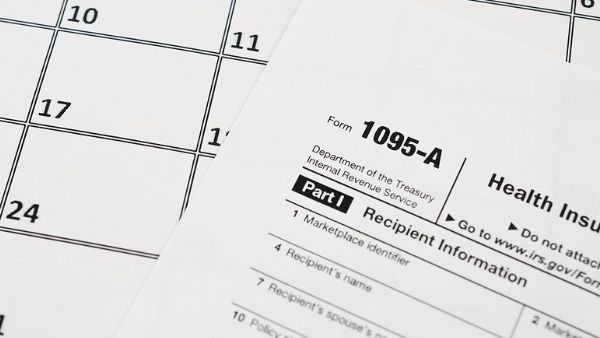Health Insurance Broker Reminders About Using Your 1095-A Form

Finding the right health insurance
coverage requires diligent planning and the help of a good health insurance broker. After completing the paperwork during the open enrollment period, tax season soon comes around, and a Form 1095-A may appear in your inbox or mailbox.
What is this document for, and how do you use it to complete your tax returns?
Health Insurance Broker Reminders About Marketplace Insurance
The Affordable Care Act reformed health care by establishing the minimum coverage that health insurance providers had to offer to taxpayers. The legislation created marketplaces for consumers to review plans and benefits.
A health insurance broker can guide a person through the many available plans to make the right choice. Though programs may have similar costs, what one offers may be substantially different from another. The difference may be thousands of dollars in health care costs over a year.
The system offers subsidies to help individuals and families with low income levels cover health insurance. People must meet the requirements to qualify for aid. The assistance comes through tax credits from the government.
When To Expect Your 1095-A Form
The government sends out
1095-A forms near the middle of February. Anyone who received marketplace coverage during the previous year should expect a form. You should usually have an email on file with HealthCare.gov, where they will send an electronic copy. They may also send a paper copy in the mail.
A change in residence or marital status could mean that a person gets more than one form. If family members enroll in a different plan or file taxes separately, you should typically receive a form for each plan.
If you do not receive your 1095-A by the last week of February, talk to your health insurance broker. You may need to double-check your email inbox, spam, or bulk folder. If your physical mailing address is not current and you did not set up forwarding, the form may have gone to the wrong location.
Regardless of the reason for the missing form, you should be able to log into HealthCare.gov and download and print an additional form. If you need assistance, your health insurance broker is glad to help.
The Information on Your 1095-A Form
The 1095-A breaks down into three sections, plus an introductory letter and additional instructions. You use the information to fill out Form 8962 for your taxes. The data determines your premium tax credit and whether you owe more or will receive a refund.
Introductory Letter
The form includes an introductory letter from the Health Insurance Marketplace that contains basic reminders. The document should alert you whether you need to file a federal income tax return.
The letter will also share information about who receives Form 1095-B and 1095-C. The letter also mentions how to void or correct the statement. The IRS gets a copy of the document, so you do not submit it with your taxes. You should keep a copy for personal records. Your health insurance broker may be able to make recommendations as well.
Part I
The first part contains your information in 15 boxes. Boxes 1 through 3 list your policy identifier, number, and name. Boxes 4 through 9 are for your name, spouse’s name, Social Security numbers, and dates of birth.
Boxes 10 and 11 display your policy start and termination dates. Boxes 12 through 15 hold your address.
Part II
This section mentions the names of each individual with coverage under the plan, including the Social Security numbers and start and end date for each person. Verify that this information is accurate.
Part III
The final section lists each month of the year and a row for totals. Column A lists the monthly enrollment premiums you paid and that a subsidy covered on your behalf.
Column B is for the monthly second-lowest-cost silver plan premium. This figure helps you determine your ultimate premium tax credit.
Column C lists the advance payments of a premium tax credit. This amount refers to advance payments on your behalf to cover monthly insurance premium costs.
Instructions for Recipient
The final pages will contain instructions and explanations of each line on the form. Your health insurance broker can help clarify other questions about your plan.
How a 1095-A Form Affects Your Taxes
During the open enrollment period for health insurance, you must estimate your annual income. The government determines your advance credits by income estimation. You must resolve your actual credit when you file your taxes at the end of the year.
If your income exceeds your estimation, your tax credit will be lower. You will have to repay the difference. If you underestimated your income, your premium tax credit is higher. You can receive a refund for the difference in the overpayment when you file your taxes.
A Health Insurance Broker That Can Help You Understand Your Options
Sorting through the health insurance plans and their tax requirements can be overwhelming. Fortunately, you can rely on the help of a knowledgeable health insurance broker. Sackett Insurance has a friendly and experienced team that works to make insurance easy for you.
Contact us to find out how.







